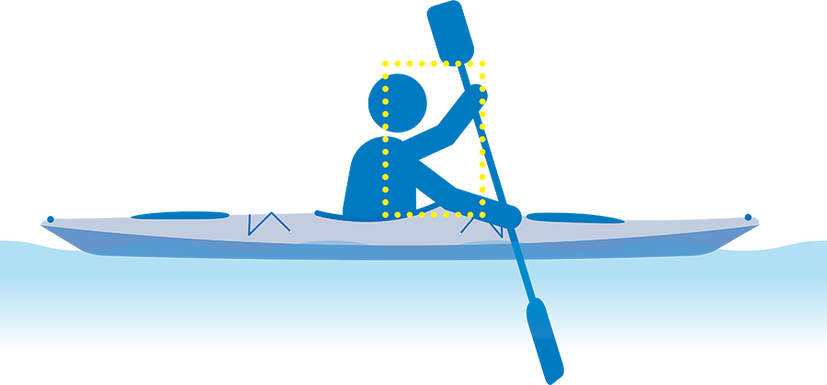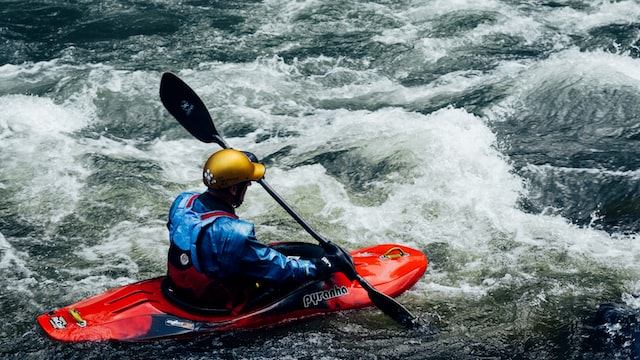The paddler’s box is one of the most crucial kayak paddling techniques to maintain, yet it is also the most frequently violated. When ignored, the paddler will be placing their shoulders at risk of injury as well as creating undue fatigue on the arm muscles. When maintained, the paddler’s box makes paddling a joy for the kayaker.
Hand and Paddle Position
The paddler’s box, therefore, refers to the position of the hands with respect to the shoulders.
When the hands are on the paddle and extended out in front of the paddler, the paddler’s box can be traced from the hands, up the arms to the shoulders, and including the chest and paddle contained within these constraints. This shape should roughly approximate a square. Now, extend those dimensions and shape down to the boat and that gives you the paddler’s box.
Maintaining the Paddler’s Box
One common misconception regarding the paddler’s box is that it solely refers to the area in front of the paddler as he or she is sitting forward. The paddler’s box moves with the paddler as the body rotates. Maintaining the paddler’s box simply means not allowing the hands to extend past the shoulders on either side, but they can move up or down within this imaginary box. In order to maintain this position, the paddler must rotate the body, thereby allowing the kayaker to keep the hands in line with the shoulders as the paddle is pulled through the water.

Paddler’s Box Summary
That’s it in a nutshell, keeping the hands in line with the shoulders and not allowing them to extend outside of the box.
The paddler should therefore, learn to rotate the torso rather than extending the arms to the left or right. Maintaining this position will give the kayaker’s body maximum rotation which in turn will equate to proper body mechanics, physiological efficiency, increased power, and speed on the water.

